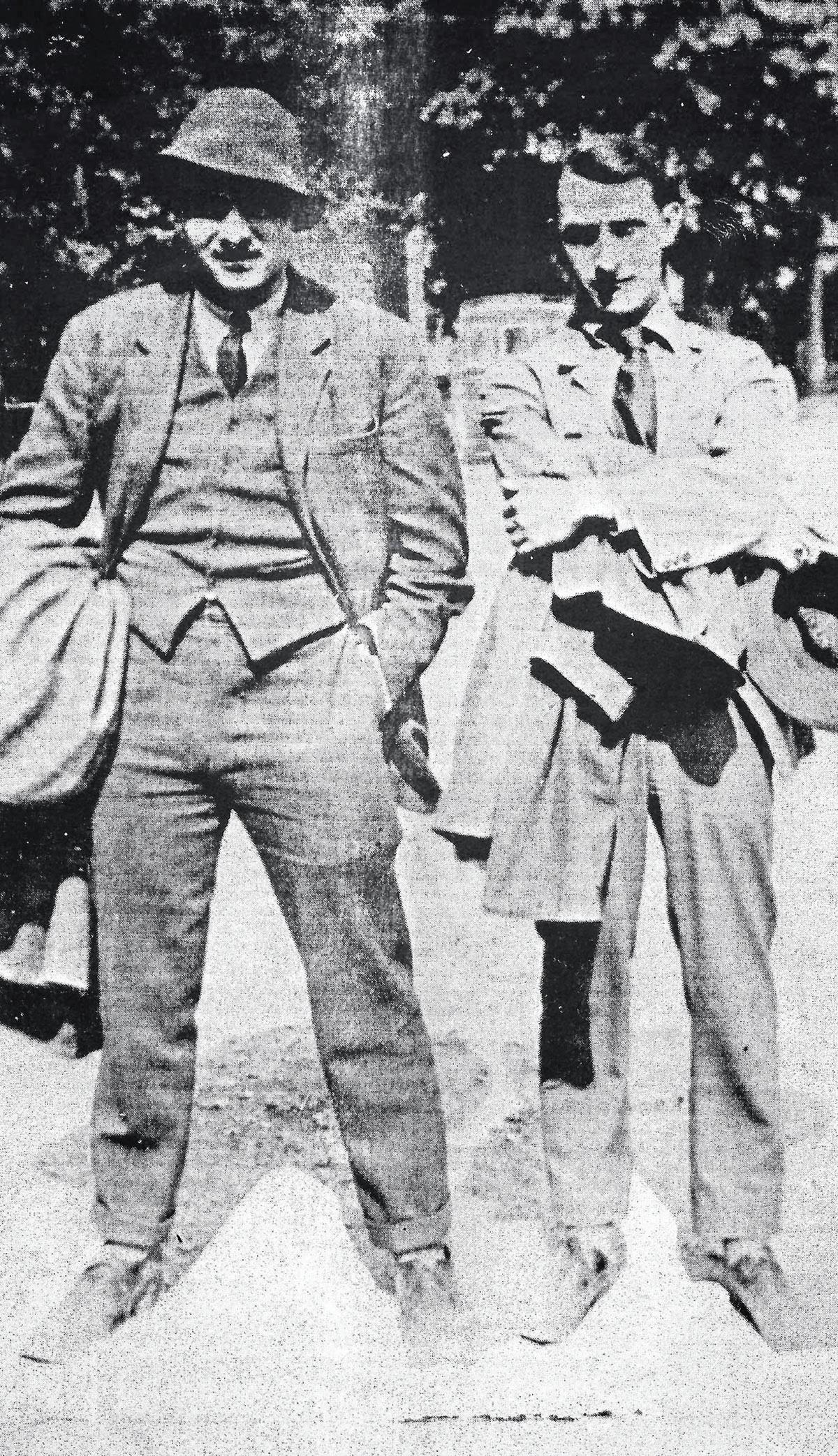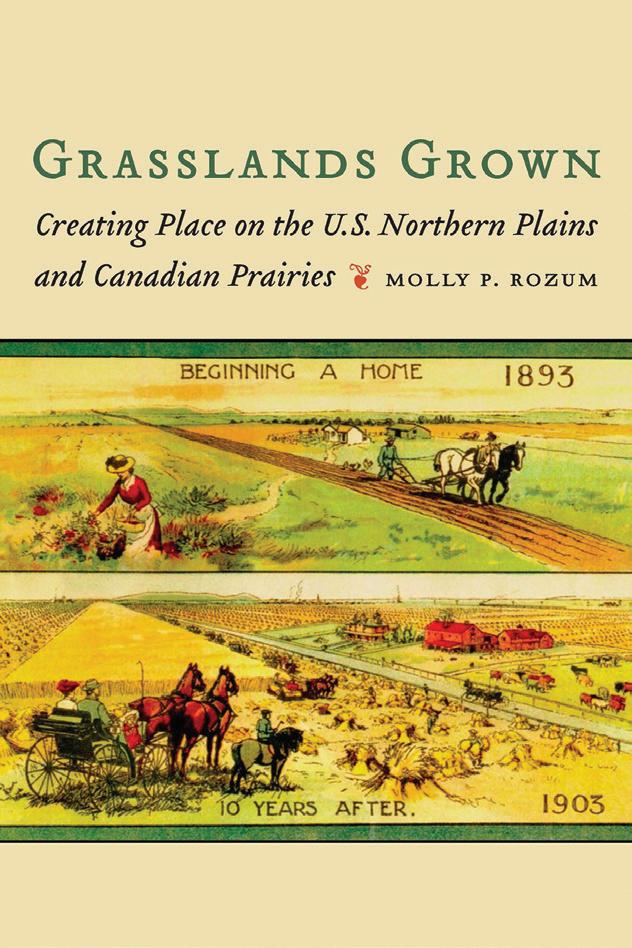
5 minute read
This Son Also Rises
by SDPB
by Katy Beem
Robert McAlmon, the writer who published Hemingway’s first book and introduced Papa to Spain, grew up in South Dakota.

In 1936, Ernest Hemingway accepted an invitation to hunt pheasants at Girton Lodge near Wentworth, SD. Unfortunately for the lodge owners who hoped to boost tourism by hosting big name hunters, Hemingway agreed to the 10-day trip only under the condition of anonymity. Save for a few, most South Dakotans were not aware the writer was in-residence until well after Hemingway, his wife, Pauline Pfeiffer, and son had departed the prairie.
But Hemingway’s hunting trip is not South Dakota’s sole connection to the storied author. Hemingway’s first book, Three Stories & Ten Poems (1923), was published by Robert McAlmon, Hemingway’s modernist contemporary and European travel companion. The son of a Presbyterian minister, McAlmon grew up in Wentworth, Volga, and Madison. Much of his published work, including the novel Village: As It Happened Through a Fifteen Year Period (1924), is based on McAlmon’s youth in Lake and Brookings counties.
McAlmon departed South Dakota around the age of 18 or 19, served briefly in the military, and lived in the Twin Cities, California, New York, Mexico and Paris. While in New York, McAlmon became part of Greenwich Village’s avantgarde literary community, and founded the magazine Contact with his friend, the poet William Carlos Williams. Here McAlmon also met and accepted the marriage proposal of the writer and heiress Annie Winifred Ellerman, daughter of billionaire British shipping magnate Sir John Ellerman. Ellerman, who took the pseudonym “Bryher” after her favorite island off the coast of Cornwall, not only funded Contact but also writers like James Joyce (McAlmon’s drinking companion), Edith Sitwell, and the American imagist poet Hilda “H.D.” Doolittle. In 1921, McAlmon and Bryher joined the Lost Generation of expatriate writers in Paris – Hemingway, Gertrude Stein, Langston Hughes, et. al. – where McAlmon set up the publishing house Contact Publishing Company, subsidized by the Ellerman family fortune. In addition to publishing Hemingway, McAlmon and Contact published books by Williams, Stein, Bryher, H.D., Ford Madox Ford and others.
Although McAlmon himself published several works of fiction, poetry, and memoirs, his literary career during his lifetime seems subscribed to supporting roles. Even McAlmon’s friend and magazine partner Williams, in his introduction to Robert E. Knoll’s 1959 biography Robert McAlmon: Expatriate Publisher and Writer wrote: “Read it and learn what should be known about one of the least familiar and most important figures of ‘the lost generation.’”
Molly Rozum, professor of history at the University of South Dakota, came across McAlmon while researching themes of regional identity for her book Grasslands Grown: Creating Place on the U.S. Northern Plains and Canadian Prairies (University of Nebraska Press, 2021.) “McAlmon’s got this fascinating story, but most people have never heard of him,” says Rozum. “McAlmon wrote about every place he ever lived, and part of his literary style is to record everything in the moment, to try and get a real depiction of life lived as it happens.”
McAlmon’s rural fiction is set in places like “Wentworth, North Dakota” and he writes most often of Madison, where he grew up alongside Gore Vidal’s father Eugene, dubbed Eugene Collins in McAlmon’s novel Village. “McAlmon wrote about the underside of small-town life, like gossip and suicide,” says Rozum. “He’s also got some wonderful stories about children and their relationships with the land and animals. He wrote in real-time, without euphemism. But he wasn’t a careful editor. He made a lot of mistakes. He was more concerned about the exactitude than the form.”
Rozum says McAlmon’s privileging of content over structure in writing about rural realities may not have landed with audiences in the 1920s. “I’m not sure people understood, in terms of his Northern Plains literature, what he was trying to do. This is the time when Willa Cather is writing, and people in the Northern Plains are just starting to put their experiences into literature. Somebody in Paris or even Minneapolis-St. Paul isn’t necessarily going to get some of the themes McAlmon is raising. They may think he’s exaggerating or making it up. But with careful editing and a careful publisher, McAlmon may have been able to emerge.”
McAlmon met Hemingway on the Italian Riviera on a visit to see Ezra Pound. McAlmon funded and joined Hemingway’s first trip to Spain and, subsequently, his first glimpse of a bullfight. In Being Geniuses Together: 19201930, McAlmon’s memoir of 1920s expatriate life in Paris, he relates a tense exchange between himself and Hemingway on the train to Madrid that would be prescient of their eventual falling out. As their train car sat beside the rotting corpse of a dog, McAlmon, nursing a hangover from the previous night’s farewell party, looked away and made for the dining-car for a whiskey. The move spurred Hemingway to accuse McAlmon of being a romanticist. “Hemingway gave a dissertation on facing reality,” writes McAlmon. “I have seen many dead dogs, cats and corpses borne in on the tide of New York harbor when working on a lumber barge. That dog had no distinction or novelty as a corpse.” But Hemingway retold the story many times in writerly circles to undermine McAlmon’s credentials of machismo realism.
The frenemies, in the parlance of today, had their ups and downs. “There’s a competition between them,” says Rozum. “McAlmon’s grown up in South Dakota and Minnesota, and Hemingway’s very concerned with manliness and kind of writing about the Midwest. They’re both interested in writing in these modern forms. There’s tension between them over what it means to be manly.”
Nonetheless, Hemingway, writing to McAlmon from Austria, praises his friend and ostensible rival’s novel: “Village is absolutely first rate and damned good reading. We’ve all read it down here and everybody thinks it’s a knock-out.”
McAlmon wrote of most places he lived and traveled, including Egypt and Turkey. Distinguished Air: Grim Fairy Tales, McAlmon’s collection about Berlin’s underground cabarets, is known for its candid depictions of gay subculture. “These were some of the first ever to enter literature,” says Rozum. “Of course, his material was not allowed to be published or even distributed in the U.S. because it would have been seen as obscene.”
McAlmon’s marriage to Bryher is widely speculated to be one of convenience. They divorced in 1927. Quarrels with Hemingway, F. Scott Fitzgerald and McAlmon over gossip about their sexuality dogged and nipped at McAlmon’s relationship with Hemingway. McAlmon’s contribution to Hemingway’s fledgling career is becoming more widely known as scholars bring McAlmon to the fore.
McAlmon left France after the 1940 occupation. He continued to travel, write, and drink until contracting tuberculosis and settling in Hot Springs, California, where he died in 1956. The Robert McAlmon Papers, including letters, manuscripts and photos, are at the Beinecke Library at Yale University.







